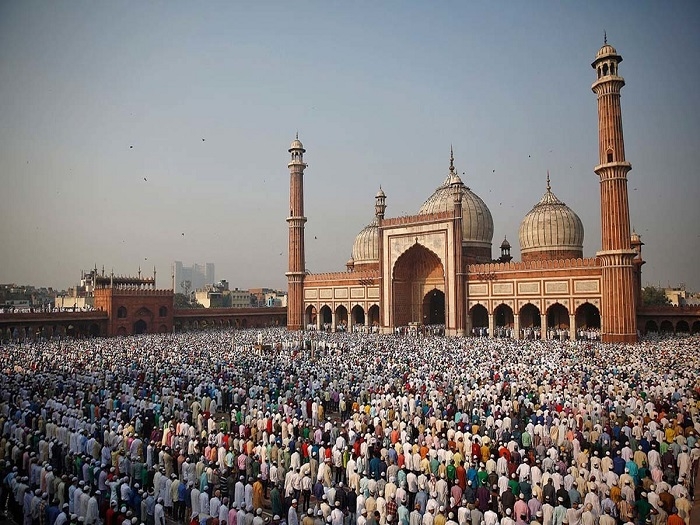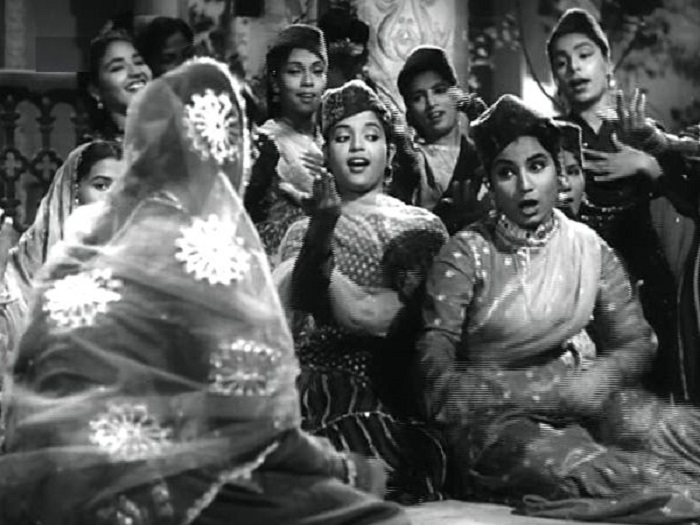Indian-Muslims or Hindu-Mussalmans: A psycho cultural Analysis - I

The subject on which I propose to write today has been there in my mind for at least 20 years. I never found time for it due to the hectic, haphazard and often remotely placed service of my profession. Lately I have become free to decide how much bound I should be. The situation of the relationships between these two segments of our populations for the last 70 years is but a meek stimulus, if at all, for this series of articles.
To begin with, this series of articles does not have ANYTHING TO DO with the theory of HINDU RASHTRA or its vicious propaganda. It is a psycho-cultural study from different segments of life, particularly arts of India. To also mention briefly, the basis of these explanations is rooted in what is called by Carl Gustav Jung as the Archetypal Memory of a race. Jung was a disciple of Dr Sigmund Freud who agreed with Freud and violently differed with his Guru to finally part ways. Both were equally great psychologists.
Way back in 70s I was intrigued by the name Ras Khan, in the morning prayers sung in the RSS winter camps. That set me thinking then.
The era of music I still love is that of 40s to 70s. After that I do not believe that much music is written worth mentioning. But this is a purely personal bias and hence unarguable and certainly without any defence logically and rationally. But it is there. People, even my wife and children who I suppose know me well, would flatly say that it is a lie if I describe myself having a romantic nature. Much of what follows will therefore be from the era of Cinemas and Music in defence of the thesis I have proposed.
In our large Hindu United Family of strong RSS background from Nagpur had a few incongruent trends arising from my father, the only one with a purely artistic temperament. He was fond of both the Qawwalis of Shakila Bano Bhopali as well as her adakari. I grew under him listening to the songs of Mughal–e–Azam, particularly the one which said – when the night itself is so intoxicating what effect the morning will bring?, and several others. M J Akbar has written a lovely article on this film just a few years back describing how the mixed crowd of his generation watching the film were crying at so many places and getting elated at many others. Those days the Indian Society was more mature to make a distinction between the art and the doubtful truth of the historicity of the film and enjoyed art as it presented.

In 1978, another peculiar piece of writing entered my mental horizon. V P Bhatia had then taken the place of K R Malkani as the editor of Organiser. If Malkani’s writings were bold, Bhatia wrote often in dangerous overtones. That apart, Bhatia wrote 3 or 4 articles talking about various Punjabi Muslim poets from parts that had gone to Pakistan who wrote songs devoted to Krishnabakti. A bit surprising but I could take it in my stride and did not find anything very unusual about it, having grown enough to know about Kabir and Guru Nanak’s attempts at syncretism. These articles have remained in the memory as they were extremely well written. As mentioned before, the Indian Society was even them mature enough not to take these articles in a distorted manner to raise rubble and ruckus.
Since 1970 I have had no much time for what were essentially the subjects of my genuine liking – humanities. It is only in the last decade that I have focused my attention on these subjects again. I suppose there is a better understanding, more maturity and less violence as age advances and when I returned to my loves, things started occurring to me. Sooner or later I will write about many other matters but the one I have chosen right now seems not to let me sit over it quietly.
In the early era of Indian Cinema the dominant presence of lead role female actresses were mostly Muslims, beginning with Noor Jehan, followed by Suraiya, Meena Kumari, Nargis then Madhubala and Waheeda Rehman. Nadira was Jewish. We need not go by the strict statistics but their roles were Hindu women’s roles outnumbering lead Muslim roles may be 5 to 1. Both roles were as good as each other. Yet, what will we remember Suraiya for? Undoubtedly the Hindu roles she did with Dev Anand in Jeet, Vidya, or Anmol Ghadi, as often sporting a vermillion as not. Yet, we may not remember her in a purely Muslim role so much, as in Mirza Ghalib.
Meena Kumari is remembered as a pure picture of a tragedy stricken Hindu woman. With her large spot of vermillion in Dil Ek Mandir, Sahib, Bibi aur Ghulam or Dil Apana aur Preet Parayi, or Kaajal and countless other films, has in a way, this Hindu custom, was trademark of Meena Kumari. But no one will remember her as much, as in Yahoodi. Look at the great Sulochana from Marathi stage who later went to Hindi cinema also. Her name was Meherjan. How do the Marathi people think of her? Probably as the epitome of how a Hindu woman, a Hindu Mother, a Hindu Grandmother or a Hindu wife should look. It is actually a miracle. But it is the reality. Can anybody ever forget Nargis, as no less than Mother India herself? Nargis arouses the same feeling even today and not so much of her roles as a heroin with more conventional parts. Nargis was a Husaini Brahmin as was Sunil Datt. These Husaini Brahmins had gone to Iran to help Husain in Karbala. That is why they are thus called. But Nargis was brought up as Muslim. Yet, we, (meaning both Hindus and Muslims every time I say We,) will not remember her for her role of a Tavayuf in Adalat or consider it as greater than Mother India. And who made Mother India? Mehboob Sahab.
The case is same with Madhubala. Madhubala was a Dehlavi, a Shia name. There has never been a Sunni outrage there and Madhubala is as good in her roles of Hindu women. Her greatest role should be considered as the kanin in Mughal e Azam. But in all others, Chalati ka Nama Gaadi, Kala Pani, Jali Note, the roles have been Hindu women’s roles. Has anybody among the Hindus ever thought of these women as being non-Hindus and admired them less? Or have the Muslims hated them since they sported vermillion and played Hindu roles in such an extraordinarily great manner? Never!
Admittedly the greatest role Waheeda Rehman has played was in Khamoshi or in Teesary Kasam. In plain clothes of a Nurse with a Hindu name, as inconspicuous as anything, she has played the role with a kind of divinity. In Teesary Kasam she is a Nautankivali and not a Tavayuf. Except for Chaudahavika Chand and may be Palki with Rajendra Kumar her other great roles remain in the realm of portraying a Hindu woman’s character.
There is something happening here and we need to understand this. In the next articles to follow I wish to discuss some more of examples. At this stage, I am neither making any claims nor offering any analysis. The only questions I will leave behind till the next are - Why does this happen? How does it happen? Can we explain this in an intelligent and yet convincing way, without applying to it facetious logic? We will come to that later. (To be Continued)
